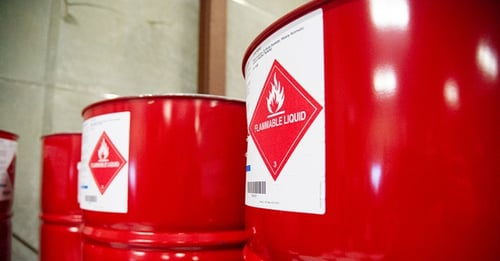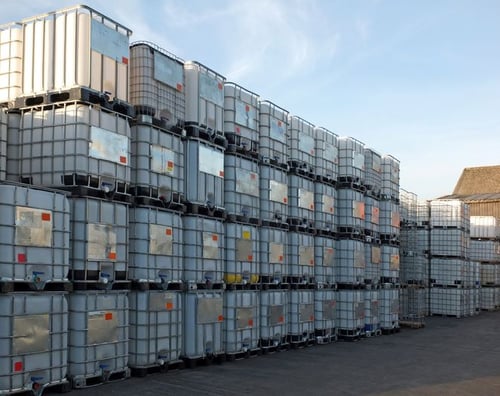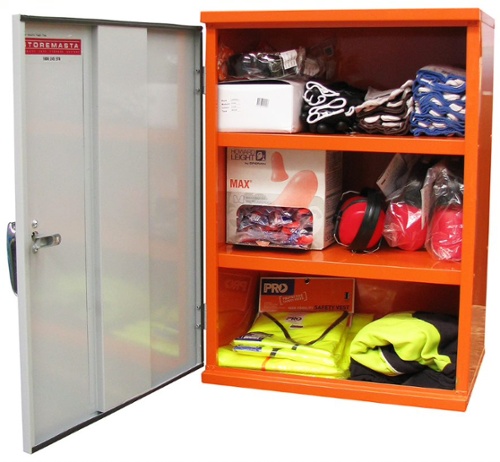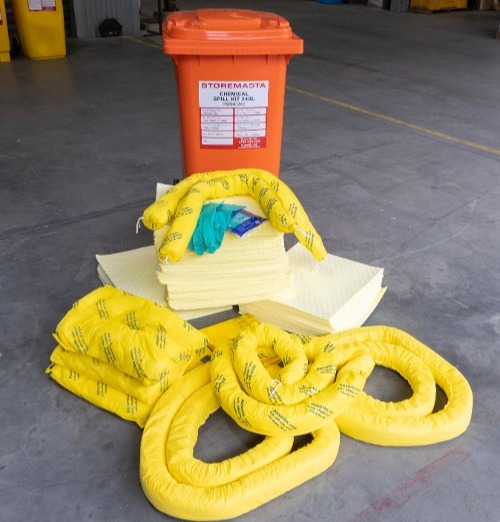Dangerous Goods are substances that present an immediate risk to people, property and the environment due to their physical and chemical properties. These substances may be explosive, flammable, oxidising, toxic, radioactive or corrosive, so it’s crucial that personnel working with these substances are trained in dangerous goods handling.
However, with 9 classes of dangerous goods and many other subdivisions, it can be a challenge determining how to handle dangerous goods in the workplace.
In this post, we’ll be offering key tips on how you should be handling dangerous goods, so you can decrease risk in your own workplace.
The Requirements for Dangerous Goods Handling
The requirements for the handling of dangerous goods can be found in the Australian Standards.
The Australian Standards are documents that outline the best practices for both the handling and storage of dangerous goods and hazardous chemicals in the workplace.
Each dangerous goods class poses different risks upon the workplace. Therefore, Standards Australia have developed a different Standard for each dangerous goods class.

Refer to the Standards to exact guidance on how your team should be handling dangerous goods and hazardous substances.
In the next section of our post, we’ll outline some important, general points that must be considered when creating procedures for the handling of dangerous goods in your business.
REMEMBER: These tips are general guidelines for safer dangerous goods handling that can be applied to most workplaces. However, to determine your exact requirements and create compliant dangerous goods handling procedures, please refer to the relevant Australian Standard that relates to the dangerous goods class that your business is carrying.
Dangerous Goods Handling Procedures
While dangerous goods and hazardous chemical handling procedures will largely be determined by the type of substance that you’re carrying, there are general guidelines that can assist workplaces with implementing safer handling of dangerous goods.
These include:
- Extra precautions for handling of large packages
- Dispensing away from incompatible substances
- Wearing and maintaining suitable personal protective equipment
- Properly reading and understanding the chemical’s Safety Data Sheet (SDS)
We’ll look at each of these important points in further detail below.
Handling Large Packages of Dangerous Goods
With the increased use of dangerous goods in the last century, chemical manufacturers now package their dangerous goods in much larger packages.
It’s not uncommon to see dangerous goods, such as acids and flammable liquids, in packages as large as 205L drums and 1000L intermediate bulk containers (IBCs).
Failure to handle these large packages with the right equipment can result in severe damage to people and property.

While it’s a common site to see dangerous goods contained in large IBCs, these larger quantities pose a greater risk to the staff who are handling them.
If your organisation procures their dangerous goods in 1000L IBCs, a forklift must be used to lift these IBCs in and out of chemical storage containers.
205L drums have a rounded shape and they are a lot harder to handle. When these drums are lifted in and out of chemical storage containers, forklift attachments must be used. However, if your business doesn’t have a forklift attachment for lifting 205L drums, these drums can be safely lifted in and out of chemical storage containers on a pallet.
REMEMBER: When using any type of handling equipment with dangerous goods, you should always ensure that the site is free from hazards before you commence your work task. Forklifts and equipment should be regularly serviced and maintained to avoid them stalling or jolting during use. Any staff members who are driving the forklift, should be suitably trained and experienced in this particular chemical transferral task.
Dispensing Dangerous Goods Away from Incompatible Chemicals
When dangerous goods are dispensed from their containers, there is an increased risk that they will mix with other incompatible classes of dangerous goods.
When incompatible classes of dangerous goods mix, it can create hazards or spark chemical reactions that can easily harm people and property. To avoid this situation occurring, dangerous goods must be dispensed in an area that is isolated from other incompatible classes of dangerous goods.
Like to learn more about segregation?
If you have separate dangerous goods storage facilities for each dangerous goods class, a safe location for dispensing dangerous goods would be inside the facility where the specific dangerous goods class is being stored.
This location will be away from ignition sources and other incompatible chemicals.
When dangerous goods are being dispensed, the task must be carried out in a bunded area. This is to ensure that any hazardous chemical spills are safely contained.
It’s also essential to have a suitable spill kit available in the area where the dangerous goods are being dispensed. This will allow your spill response team to contain and clean-up any spills that may have occurred during the dispensing process.
Remember to place the appropriate spill kits in the dispensing area, so staff can quickly contain and clean-up any hazardous spills.
Using the Correct Personal Protective Equipment
PPE is another control measure that can be used to protect staff and contractors from the risks associated with dangerous goods. It’s particularly important to use PPE when dispensing and handling toxic and corrosive substances.
Toxic substances are substances that will cause harm to human health if they enter the body. The means by which toxic substances enter your body are called the routes of exposure.
There are 3 main routes of exposure for dangerous goods or hazardous chemicals.
These exposure routes include:
- Ingestion – caused by the accidental ingestion of a chemical, which can result in vomiting, stomach pain and poisoning.
- Skin contact – substances can easily splash or spill onto staff, harming the skin and eyes.
- Inhalation – harmful gases and fumes may be emitted from hazardous chemicals, causing damage to the throat, respiratory tract and lungs.
Of the three routes of exposure, inhalation is the most common form.
To reduce the risk of exposure to toxic substances, it is important to use the correct PPE, such as respiratory equipment and gloves while handling and dispensing toxic substances .
Many substances such as flammable liquids, organic peroxides and oxidising agents are also toxic. Therefore, the correct PPE must be used while handling these substances as well.
Another dangerous chemical that often requires the use of PPE is Class 8 Corrosives. Corrosive substances are substances that will dissolve other materials such as stone, metal and human flesh. To reduce the risk of acid burns, corrosive resistant gloves must always be worn when handling corrosive substances.
To ensure that everyone in the workplace has access to the correct personal protective equipment, all the relevant PPE must be kept in a hi-visibility PPE cabinet that is close to the dangerous goods storage location.

Make sure PPE is clean, undamaged and fit-for-purpose. It must be stored and maintained to ensure its effectiveness.
Referring to the Safety Data Sheets
To ensure that everyone in the workplace is aware of the specific risks associated with the dangerous substances that they are handling, it is very important to have a copy of the safety data sheets for each dangerous substance.
Safety data sheets are documents that outline the specific reactivity, fire, health and environmental hazards associated with a particular substance. The safety data sheet will also outline the basic storage and handling requirements for the particular substance. Before a dangerous substance is dispensed or used, the safety data sheet for the substance must be consulted to ensure that the dangerous substance is handled in the safest manner.
The safety data sheets for each substance must be kept in a secure document storage box, close to the area where the dangerous goods are being stored. This allows the safety data sheets to be easily accessed in the event of an emergency.
Do You Know How to Safely Handle Dangerous Goods?
As dangerous substances pose many risks upon the people and property of your organisation, it is very important to ensure that you handle them in a safe manner. This includes using the correct handling equipment, wearing and maintaining compliant PPE, and understanding the SDS of each chemical held onsite.
Understanding how to handle dangerous goods and hazardous chemicals also involves creating dangerous goods handling procedures. This is so your staff can be properly trained to safely handle these hazardous substances in the workplace.
Before dangerous goods are handled, it is very important to be aware of the specific chemical and physical properties associated with the dangerous goods that you are handling. If you’d like more information on the properties associated with the dangerous goods classes, download our FREE eBook by clicking on the image below.
Joining the team as a Dangerous Goods Storage Consultant, Melissa Hampton became Storemasta's Marketing Manager in late 2021. With extensive knowledge and experience in chemical compliance, Melissa is responsible for leading the Marketing team and helping shape their marketing strategy. In her spare time, you can find Melissa hiking, swimming and enjoying the great outdoors in beautiful north-west Tasmania.

